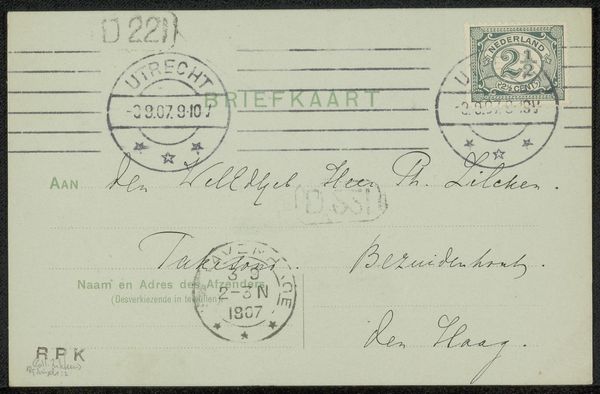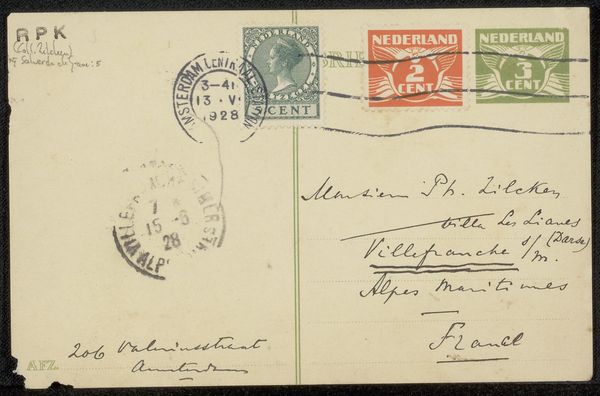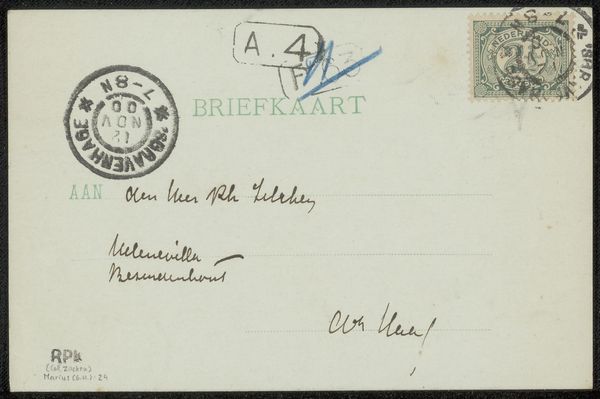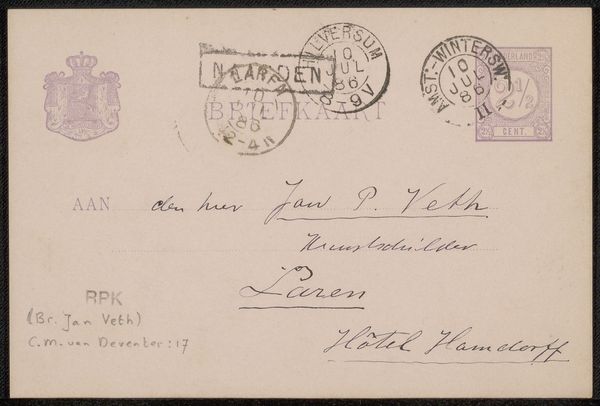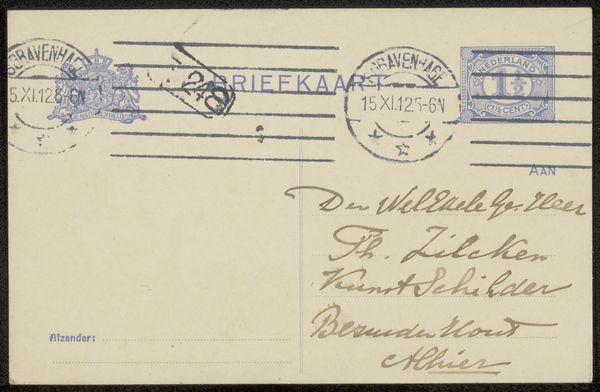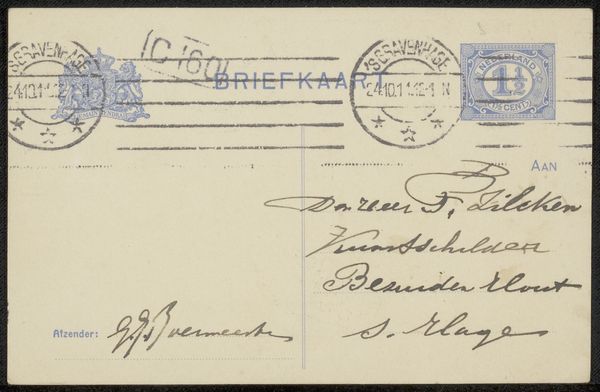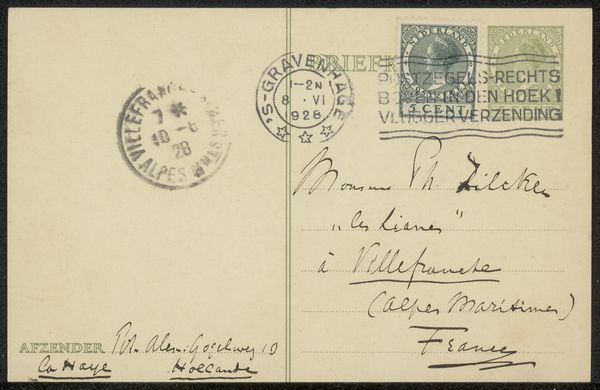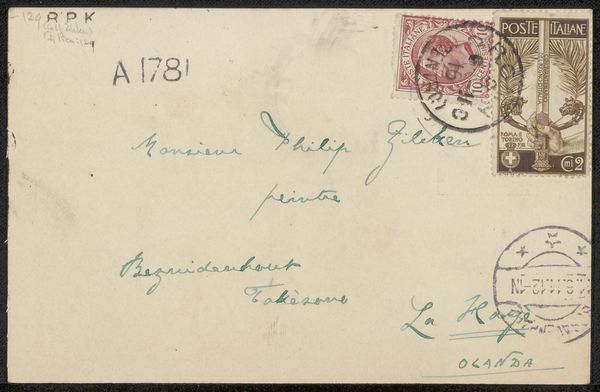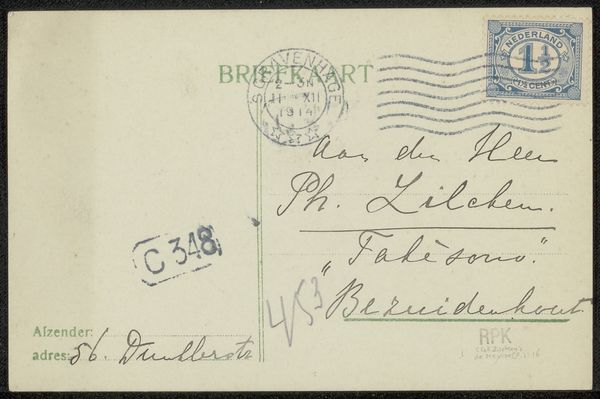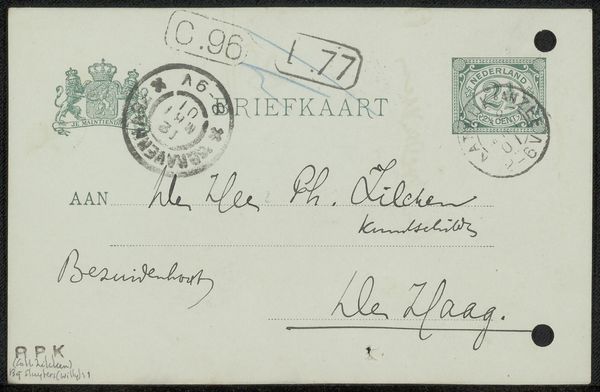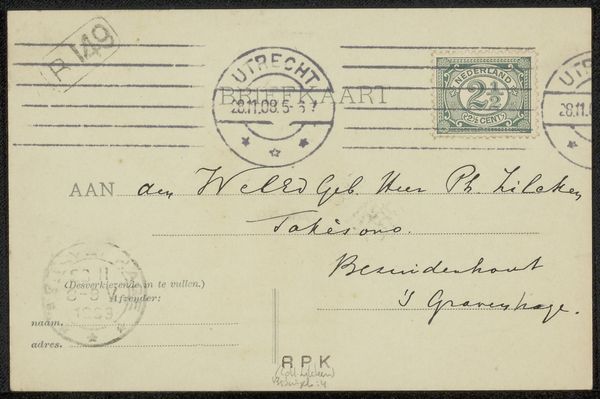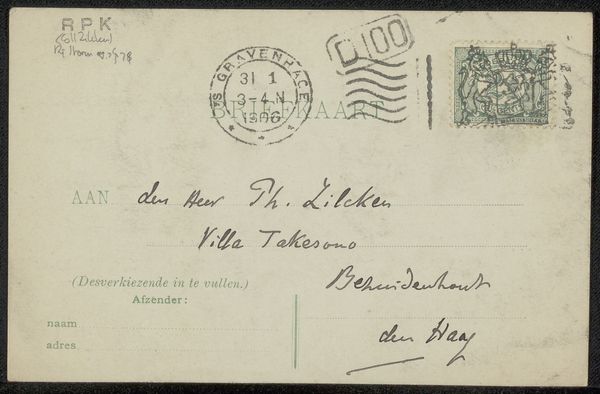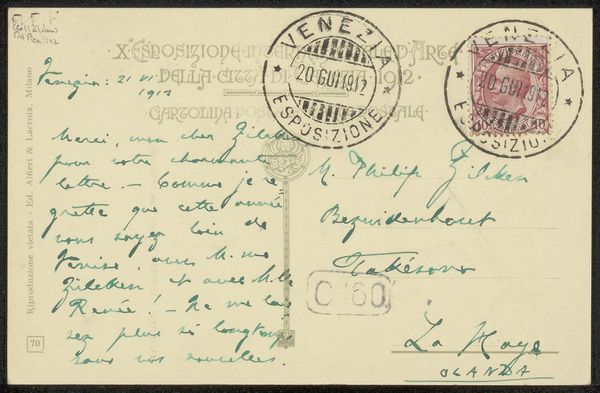
drawing, print, paper, ink
#
drawing
# print
#
pen sketch
#
paper
#
ink
Copyright: Rijks Museum: Open Domain
Curator: Before us is “Briefkaart aan Philip Zilcken,” a pen and ink drawing, most likely dating before 1911, created by Grada Hermina Marius. Editor: It looks incredibly ordinary, almost utilitarian, yet the textures created by the ink, the postal markings… it’s strangely compelling. I find myself wondering about the quality of the paper itself. Curator: Right, a postcard functions as both an object of correspondence and potential artistic medium. The content speaks to its function as communication—presumably relating to Marius's personal or professional exchange with Zilcken, a prominent figure in the Dutch art scene. Editor: The labour is hidden. It's a sketch, done swiftly, for the explicit purpose of communicating a message. Did Marius consider this “art” or just part of the daily grind of artistic practice, maybe corresponding or pitching ideas? The stamp, the postal markings – all these imposed processes highlight a dialogue between art-making and societal structures. Curator: Absolutely. Consider how the accessibility of postal services shaped artistic networks. The brief message and utilitarian format contrast with our perception of 'high art,' but this piece gives a tangible insight into Marius's network. This form of exchange became quite popular with Impressionist painters. Editor: Precisely! Was the paper readily available? What was the cost of postage? These might seem like mundane details, but they impacted how artists circulated their work, built their reputations, and how society at large consumed it. This seemingly minor piece actually reveals a dense nexus of artistic production. The labor becomes exposed because we expect something completely different. Curator: The postcard's inherent purpose dictates a public consumption, to a degree – unlike, say, a private journal. Its visual content is mediated by its function, thus adding another layer to interpretation within Marius's oeuvre and social context. Editor: In thinking about it now, it also provides insights into the postal workers' world – how this message flowed through various hands before finally reaching the intended recipient. Every mark, every smudge, whispers about its journey, both physical and social. Curator: A casual yet important reminder that even simple images hold layered stories reflecting the economic and political dimensions that framed the art world during Marius’ time. Editor: I think that I see now, how such an unpretentious scrap of paper contains more art within and without its intended function and shows a greater network of support in the art community, which reveals the labor and access an artist in the early 20th century might engage.
Comments
No comments
Be the first to comment and join the conversation on the ultimate creative platform.
